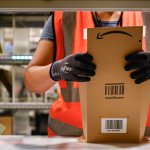The 2022 supply chain outlook and coping with shortages

- In order to alleviate supply chain issues, commercial companies need to have an open mindset
- The near future of supply chain technology will focus on improving the quality of life in workers while meeting new demands from customers across industries
- “Stopping the spread” is a crucial component of supply chains’ resilience
The growth of the global economy and advances in technology have made it increasingly possible for companies to outsource a wide array of manufacturing processes to third-party suppliers. As outsourcing has become more commonplace, there is an ongoing debate about its benefits and disadvantages, particularly regarding the impact on global supply chains.
The global supply chain market size value is $US15.85 billion and is expected to experience a CAGR of 11.2% from 2020 to 2027. The presence of the Omicron variant continues to test the global supply chain and how strong it is to withstand persistent shortages.
And this ever-evolving virus has impacted workers all around the world. More specifically, bottlenecks arise as it infects people who work within the supply chain. Businesses cannot function properly if they don’t have staff, from any industry, from shipping port movements to the local grocery stores.
Expectations of the supply chain in 2022 as shortages and delays persist

Quawnishia Morgan, ADS
In an exclusive interview, TechHQ spoke with Quawnishia Morgan, ADS warehouse and logistics manager, to gain more insights on the state of the supply chain and anticipated shortages for 2022. According to Morgan, supply chain shortages and delays this year are more similar to what was seen in 2021, as opposed to years preceding the pandemic.
“Until there is a complete handle on the continuous emerging new variants, vaccinations, mask mandates, and people simply staying home when they are sick, we should expect to see our supply chain impacted. This means more shortages, more delays, and fewer people being available to work in logistics as a whole,” she said.
Tech advancements help firms minimize delays for customers
With a growing population, increasing demand for personal luxuries, and the rising labor cost, it’s inevitable that supply chains will shift to meet this demand. With tighter timelines and higher stakes on delivery efficiency, businesses are looking for new ways to streamline their processes.
The near future of supply chain technology will focus on improving the quality of life in workers around the globe while meeting new demands from customers across industries. Morgan highlighted that companies could see cloud and edge computing and blockchain at their best as businesses transitioned to “work from home” environments.
However, the question now is, would the new telework / hybrid environments be as successful without these infrastructures at work? “Serving customers in the same capacity, as if you were in a corporate office “pre-COVID,” will no delay prove these tech advancements work and are successful,” said Morgan.
She highlighted that setting up digital infrastructure using cloud and edge computing is beneficial for many companies.
Commercial companies need an open mindset
Morgan said that military logistics suppliers must think outside of the box to sustain their businesses. “Seeking more end-to-end supplier solutions helps order fulfillment tremendously and ensures customers receive the product more efficiently,” said Morgan, who works in ADS, Inc, a military equipment supplier.
Therefore, commercial companies should adopt a more open mindset, and not be afraid to learn from what works well for others. For instance, utilizing mobile applications that are cloud-hosted and thus accessible from various devices can positively prop up the supply chain.
Something as simple as digital catalogs to be accessible from mobile devices reduces the costs of printing physical copies while reducing the carbon footprint at the same time.
Negative impact of the ‘Just-in-time’ strategy
The “Just-in-time strategy” (JIT) exists in environments where products are only sourced as and when they are needed. “There is a negative impact to this strategy when we discuss frontline workers, for example. We all saw the lack of PPE (masks, face shields, aprons, etc.) available at the pandemic’s start,” said Morgan.
PPE was not available when demand overshot supply in those critical months, nor could they be made fast enough. JIT proved to be not the best strategy for frontline or emergency care workers. For frontline workers, strategies such as inventory management, automation, market data and analytics, and material requirement planning would be better suited in place of JIT.
Ground-breaking 2022 tech to address supply chain issues
Morgan believes that some supply chain strains will continue to be felt in 2022. It will take some time to recover from the impact COVID has wreaked on the world.
“Stopping the spread” is a crucial component of the supply chain’s success. However, this is not the only component! Companies must continue to be environmentally conscious in their practices and promote overall sustainability,” said Morgan.
Perhaps visiting automation ideas to curb outdated processes that still involve human touches, are among the ways to get ahead of supply chain bottlenecks.
Amazon addressing supply chain issues
Amazon has been at the forefront of automated warehouses for some years now. Amazon Robotics, a subsidiary of the e-commerce juggernaut, has developed advanced robotics to support innovation in logistics and fulfillment.
“I’ve seen this work within the Amazon environment, creating a “smart warehouse,” said Morgan. Their core mission is to improve operational efficiency and productivity for their customers. Their vision is about making things better for their customers while maintaining the highest quality.
“This is where people and robots are in the warehouses together doing similar functions. They are often the blueprint for many businesses. Amazon has set the bar to address supply chain issues sooner,” said Morgan.
Amazon uses close to 45,000 robots in 20 of its warehouses, yielding warehousing operating cost savings of up to 20%.
Future of supply chain management
The future of supply chain management is changing and evolving as technology becomes more prevalent in the manufacturing industry. In the future, companies will need to be able to react to market changes faster than ever before. To do this, they will need a new strategy for managing data more effectively.
Supply chains are becoming increasingly globalized, with more suppliers from all over the world competing for business. This means that companies must have access to accurate data in real-time at all times in order to make informed decisions regarding their supply chain operations.
The introduction of new technologies has changed how businesses operate, but it also changed the way consumers interact with brands — not to mention how their delivery and fulfillment expectations have changed drastically in the last couple of years. More targeted data management and study of analytics and insights can help firms to be more on the ball heading into 2023.









